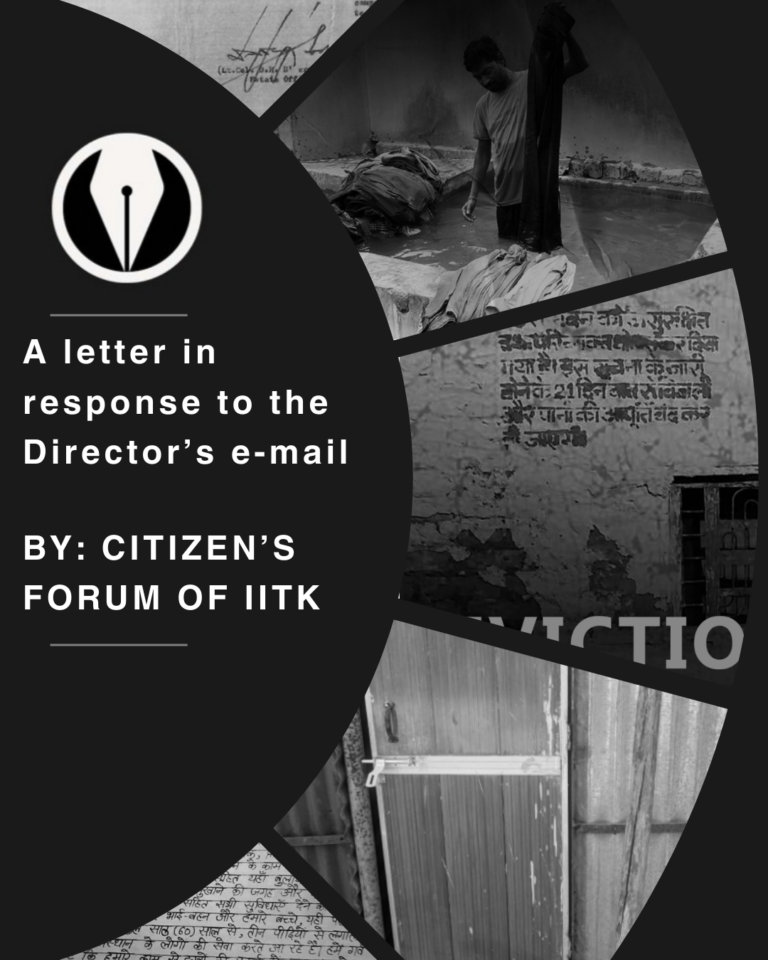The Women’s Cell of IIT Kanpur was constituted in accordance with the Sexual Harassment of Women at Workplace (Prevention, Prohibition, and Redressal) Act, 2013 as stated on its website. The Cell’s mandate includes sensitizing the community towards gender-related issues, and in this regard
- organizing orientation programs for new students and employees,
- conducting workshops and open houses for various sections of the community.
The Cell also advises on available courses of action to women on campus who may be in distress.
The body of women’s cell constitutes the following members:
- Mohua Banerjee (Chairperson)
- Shikha Dixit (Vice-Chairperson)
- Animesh Das, Anjan Gupta, Shilpi Gupta (Faculty members)
- Seema Yadav (Staff member)
- Richa Agarwal, Vedant Goenka (UG Student members)
- Chitwan Lalji, G. Balamurugan (PG Student members).
The creation of the Women’s Cell in its current form was somewhat shrouded in controversy. In the words of Prof. Mohua Banerjee, “After the Act, in 2014, the former redressal committee (Women’s Cell) was replaced by the Internal Complaints Committee (henceforth referred to as the ICC), retaining the Chairperson and the Vice Chairperson. A lot of hue and cry ensued, because[1] the former Women’s Cell had done a lot of good work. The administration wanted to separate the case-handling and awareness-creating bodies, so they disbanded the old Cell, created the ICC (for case-handling), followed by the commissioning of the Women’s Cell. Hence, in addition to the ICC, the Women’s Cell was founded, which wouldn’t deal with cases but rather with awareness and sensitization of the community. Both bodies work for the welfare of all female members of the campus community – faculty, staff and their family members and students.”
A notable feature of the composition of the Women’s Cell is the fact that there is almost equal representation of both genders and representation is provided to all sections of the campus community – faculty, students (UG and PG) and staff. The members, however, have been appointed and there has not been an official nomination/election for the same.
The most notable activity of the Women’s Cell, IIT Kanpur in recent times has been the launch of its website. The website contains details of the current team of the Women’s Cell, a description of its activities and some important features of the Sexual Harassment of Women at Workplace (Prevention, Prohibition, and Redressal) Act, 2013 which everyone should be aware of, for example, explicit definitions of voyeurism and stalking and how they constitute punishable offences under law.
The Women’s Cell has the following activities underway to increase awareness:
- Designing posters for spreading awareness of gender-sensitivity issues, to be on display at various places inside the campus
- Preparing a survey to be circulated to the campus community to get an estimate of the frequency and extent of sexual harassment and other such incidents on campus.
It has two main activities lined up for this month:
- On International Women’s Day (8th March), it shall be organising the screening of documentaries on pertinent issues in the Open Air Theatre, followed by a reading session.
- In Techkriti ’17, it is organising a panel discussion on issues faced by women in academia.
The Women’s Cell currently has no plans in place as to the expansion of the team from its current strength. It is open to ideas and inputs from the entire campus community and other organisations of the campus operating at various levels. However, it is primarily focussing on having a system in place first. The launching of the website, for example, is a significant step in that direction.
Written by Siraj Singh Sandhu, S. Nirmal Kumar, Soumyadeep Datta
Clarifications and edits:
[1] – The earlier version seemed to imply that an outcry against the disbanding of the erstwhile Women’s Cell led to the formation of the current Women’s Cell. However, the administration wanted to separate the case-handling and awareness-creating bodies, so they disbanded the old cell, created the ICC (for case-handling), followed by the commissioning of the Women’s Cell in its current form.










